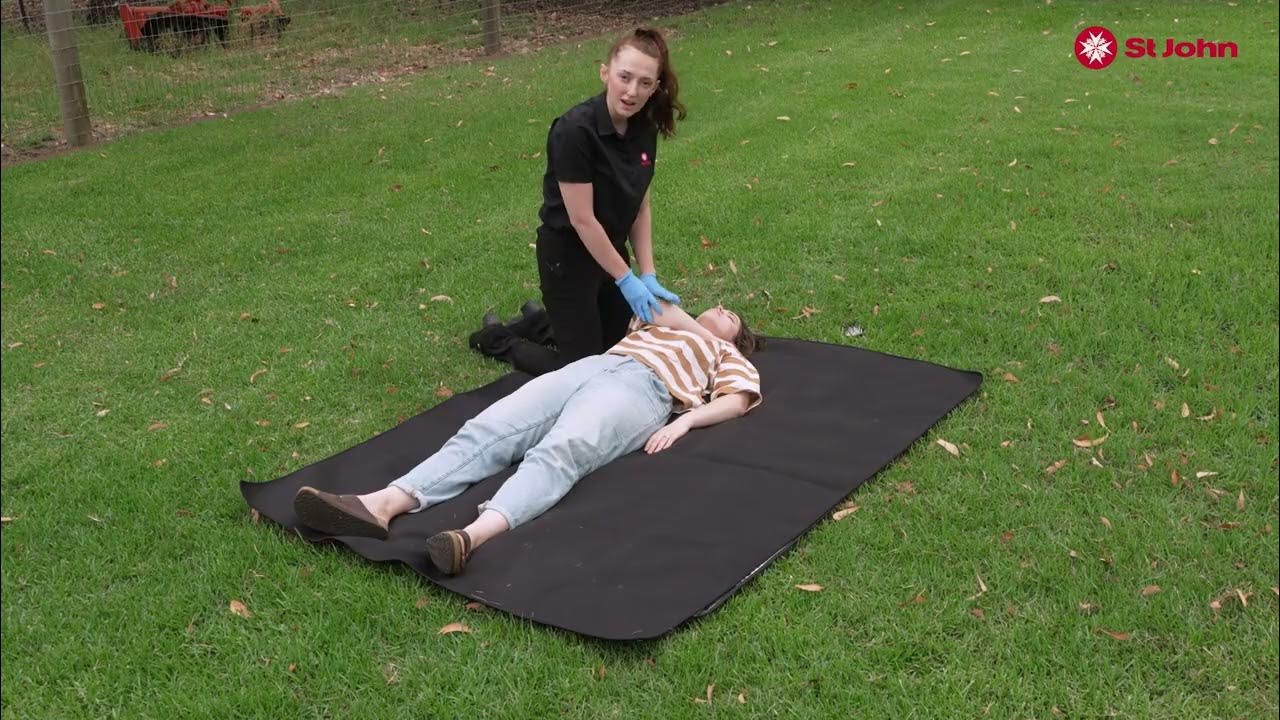Allergies - Animated
Summary
TLDRThis video script outlines crucial steps for aiding a casualty with a severe allergic reaction, emphasizing the urgency of calling emergency services and checking for an adrenaline autoinjector. It advises on helping the casualty breathe, monitoring their condition, and remaining calm until help arrives. The script also mentions administering a second injection if needed and the possibility of performing CPR if the casualty becomes unresponsive.
Takeaways
- 🚨 Call 999 or 112 immediately if you suspect a severe allergic reaction—it's a life-threatening condition.
- 💉 Ask the casualty if they have an autoinjector with them, as it's a common emergency treatment for severe allergies.
- 🤝 Assist the casualty in using the autoinjector if they have one, ensuring it's held in place as instructed.
- 🧘♂️ Help the casualty sit in a position that facilitates breathing and stay with them throughout the ordeal.
- 👃 Keep checking the casualty's breathing, looking for signs of difficulty such as wheezing or labored breaths.
- 🔁 Administer a second dose of the autoinjector after five minutes if there's no improvement.
- 🌡 If the casualty becomes pale or weak, lay them down with their legs raised to support circulation.
- 🆘 Stay with the casualty until professional help arrives, providing reassurance and keeping them calm.
- 🛑 Be prepared to perform basic life support and CPR if the casualty becomes unresponsive or their condition worsens.
- 🔄 Remember that the casualty's condition can change rapidly, so constant vigilance and readiness for action are crucial.
Q & A
What is the first thing to do if you suspect someone is having a severe allergic reaction?
-Call 999 or 112 immediately for help, and inform the operator that you suspect an allergic reaction.
Why is it important to avoid putting your face near the mouth and nose of a casualty during a severe allergic reaction?
-It is important to avoid this to prevent any potential risk of infection or contamination, and to maintain a safe distance for both the rescuer and the casualty.
What is an autoinjector and why might a person with allergies carry one?
-An autoinjector is a device that contains a pre-measured dose of adrenaline for emergency use. People with severe allergies often carry one to quickly treat an allergic reaction.
How should the autoinjector be used if available?
-The autoinjector should be held in place for three seconds or as instructed on the device, to deliver the adrenaline dose.
What position should a casualty be in to help with their breathing during a severe allergic reaction?
-The casualty should be helped to sit in a position that facilitates breathing, such as an upright or semi-upright position.
Why is it crucial to keep checking the casualty's breathing during a severe allergic reaction?
-It is crucial to monitor the casualty's breathing to detect any changes or difficulties that may indicate worsening airway swelling or obstruction.
What signs might indicate that a casualty is having difficulty breathing due to a severe allergic reaction?
-Signs may include labored breathing, wheezing sounds, or an overall appearance of struggle when breathing.
How can you reassure a casualty that help is on the way during a severe allergic reaction?
-Reassure them verbally that help is coming, and maintain a calm demeanor to help keep them calm as well.
Under what circumstances might a second injection from the autoinjector be given?
-A second injection can be given after five minutes if there has been no improvement in the casualty's condition.
What should you do if the casualty becomes pale or weak during a severe allergic reaction?
-Lay them down with their legs raised and supported to help with blood flow and maintain their comfort until help arrives.
What is the final step to take if the casualty becomes unresponsive during a severe allergic reaction?
-Be prepared to initiate basic life support, including CPR, if the casualty becomes unresponsive.
Outlines

هذا القسم متوفر فقط للمشتركين. يرجى الترقية للوصول إلى هذه الميزة.
قم بالترقية الآنMindmap

هذا القسم متوفر فقط للمشتركين. يرجى الترقية للوصول إلى هذه الميزة.
قم بالترقية الآنKeywords

هذا القسم متوفر فقط للمشتركين. يرجى الترقية للوصول إلى هذه الميزة.
قم بالترقية الآنHighlights

هذا القسم متوفر فقط للمشتركين. يرجى الترقية للوصول إلى هذه الميزة.
قم بالترقية الآنTranscripts

هذا القسم متوفر فقط للمشتركين. يرجى الترقية للوصول إلى هذه الميزة.
قم بالترقية الآن5.0 / 5 (0 votes)






